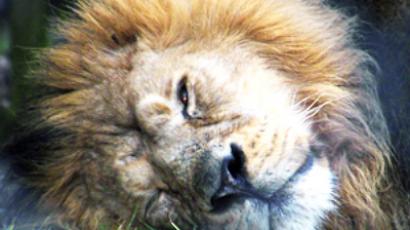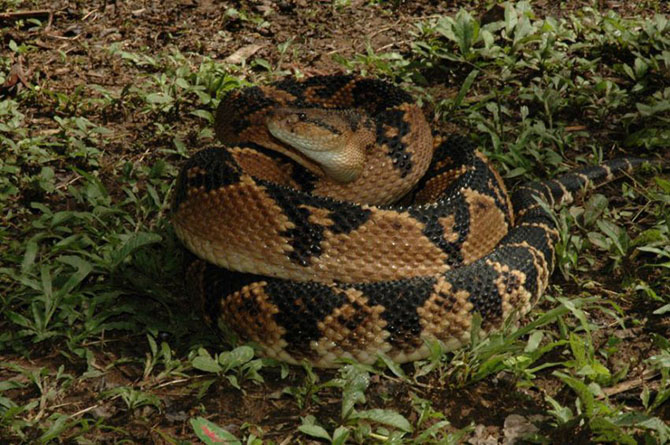| Topic: 100s of Dangerous Animals Brits Keep As Pets | |
|---|---|
|
Here, fluffy! Lions, cobras & crocs among 100s of dangerous animals Brits keep as pets
 Killer cobras, cheetahs and alligators are among the hundreds of wild and poisonous animals being kept as pets in the UK – and there’s concern that both the owners and the pets are in danger. A Press Association investigation found there are 13 tigers, two lions, eight leopards, seven cheetahs and nine pumas prowling around on private land across the country. Hundreds of poisonous snakes are also being kept, including more than 300 cobras, vipers and rattlesnakes, while 10 alligators, nine crocodiles and 17 caimans, a smaller member of the crocodile family, are lurking in domestic enclosures. The data was obtained via Freedom of Information requests sent to every council in the country, of which 363 replied. In Northern Ireland, the Environmental Agency provided figures for the whole country. The responses show the pets could be found in cities including London, Sheffield, Hull, Swansea and Portsmouth. In Cornwall, the council has given permission for the keeping of pumas, lynxes, ocelots, lemurs, vipers and wild cats. In Central Bedfordshire, there are wolves, alligators, caimans, black widow spiders and venomous snakes. More than 100 councils have given members of the public licenses to keep the animals, the investigation found. Dangerous wild animal (DWA) licenses are granted by councils to allow people to keep undomesticated animals as pets if they have the right safety measures at their home – and pay a small fee. The Royal Society for the Prevention of Cruelty to Animals (RSPCA) says it is concerned the licenses too often focus on protecting the public from harm, rather than on the well-being of the animals themselves. “We are deeply concerned about the number of exotic animals, including dangerous wild animals, now being kept as pets,” a spokesperson said. “People may buy them with little idea of how difficult they can be to keep and the animals are sometimes neglected when the novelty wears off and the commitment hits home.” She added: “Licenses for exotic animals classed as Dangerous Wild Animals – such as cobras, ostriches and caiman crocodiles – are granted by local authorities and the details are also held locally. There is no centrally-held list to determine how many are kept across the country.” The figures supplied by the councils only collate details of animals being kept legally with a license, but not any that are being kept without the proper authorization. |
|
|
|
|
|
I thought only Americans suffered from this obsession.
So is it all English speaking countries, that think anything, that may be in a Disney movie is a good thing?  Hey!!! South America.. What creatures do you have chained up, that you think is so cute, but will kill you the first chance it has? 
|
|
|
|
|
|
I thought only Americans suffered from this obsession. So is it all English speaking countries, that think anything, that may be in a Disney movie is a good thing?  Hey!!! South America.. What creatures do you have chained up, that you think is so cute, but will kill you the first chance it has?  Bushmasters? A Pit-Viper!  and it is indigenous! |
|
|
|
|
|
I know "we be rattle snake eaters"over here .. Hhhaa (Maryland)
* Yea it is a thread...  * * But I don't want to see this guy The Crotalinae, commonly known as pit vipers,[2][3] crotaline snakes, or pit adders, are a subfamily of venomous vipers found in Eurasia and the Americas. They are distinguished by the presence of a heat-sensing pit organ located between the eye and the nostril on either side of the head. Currently, 18 genera and 151 species are recognized:[4] seven genera and 54 species in the Old World, against a greater diversity of 11 genera and 97 species in the New World. These are also the only viperids found in the Americas. The groups of snakes represented here include rattlesnakes, lanceheads, and Asian pit vipers. The type genus for this subfamily is Crotalus, of which the type species is the timber rattlesnake, |
|
|
|
|
|
I thought only Americans suffered from this obsession. So is it all English speaking countries, that think anything, that may be in a Disney movie is a good thing?  Hey!!! South America.. What creatures do you have chained up, that you think is so cute, but will kill you the first chance it has?  Bushmasters? A Pit-Viper!  and it is indigenous! can grow up to twelve feet! http://en.wikipedia.org/wiki/Lachesis_muta Better get a Jaguar! 
|
|
|
|
|
|
I thought only Americans suffered from this obsession. So is it all English speaking countries, that think anything, that may be in a Disney movie is a good thing?  Hey!!! South America.. What creatures do you have chained up, that you think is so cute, but will kill you the first chance it has?  Bushmasters? A Pit-Viper!  and it is indigenous! can grow up to twelve feet! http://en.wikipedia.org/wiki/Lachesis_muta Better get a Jaguar!  I think.. I am safe. Or I will need another freezer  Geographic range Found in South America in the equatorial forests east of the Andes: Colombia, eastern Ecuador, Peru, northern Bolivia, eastern and southern Venezuela, the island of Trinidad in the Republic of Trinidad and Tobago,[7] Guyana, Surinam, French Guiana and much of Brazil. The type locality is "Surinami" (Surinam).[1] |
|
|
|
|
|
not just brits, i was reading an article yesterday about how some biologists found 3 Nile crocs in the Floridian wild...
http://www.cnn.com/2016/05/21/us/nile-crocodiles-florida-irpt/index.html |
|
|
|
|
|
not just brits, i was reading an article yesterday about how some biologists found 3 Nile crocs in the Floridian wild... http://www.cnn.com/2016/05/21/us/nile-crocodiles-florida-irpt/index.html  (CNN)There may be a deadly new invasive species lurking in Florida's swamps. A team of scientists has identified three reptiles captured near Miami as Nile crocodiles, a species native to Africa. Through DNA testing, scientists from the University of Florida were able to confirm that the reptiles captured in the wild from 2009, 2011 and 2014 were Nile crocodiles, the second-largest extant reptile species in the world. The findings were published in the journal of Herpetological Conservation and Biology in April. The study could mean that more of these man-eating creatures are lingering in the Sunshine State. "The odds that the few of us who study Florida reptiles have found all of the Nile crocs out there is probably unlikely," Kenneth Krysko, herpetology collections manager at the Florida Museum of Natural History at the University of Florida, said in a statement. "We know that they can survive in the Florida wilderness for numerous years, we know that they grow quickly here and we know their behavior in their native range, and there is no reason to suggest that would change here in Florida." Nile crocodiles have a dangerous reputation in their native homeland. Between 2010 and 2014, they were responsible for about 480 attacks on people and 123 fatalities in Africa. In comparison, in 2015, there were 98 unprovoked shark attacks worldwide and six deaths, according to a report by the International Shark Attack File . These crocodiles can grow up to 18 feet long and weigh as much as a small car. Genetic testing revealed the three Nile crocodiles were related, which means they may have come from the same source. And their DNA most closely matched Nile crocodiles from South Africa. Matthew Shirley, a former University of Florida doctoral student and study co-author, took DNA samples of Nile crocodiles across U.S. zoos and compared those samples with the Nile crocodiles from the Miami area. The DNA did not match, and the source of these reptiles remains unknown. Scientists noted in the study that in the last decade large quantities of Nile crocodiles have been imported from countries such as South Africa and Madagascar. These crocodiles have been put on display at places such as Disney's Animal Kingdom in Florida. But it's likely that Florida's exotic pet trade has introduced these creatures into the wild, according to researchers. In recent years, several invasive species such as the Cuban tree frog and a variety of snakes from around the world have flourished in Florida, according to the National Park Service . Some have wreaked havoc on the state's ecosystem, causing officials to take action. For example, the invasion of the Burmese python , the largest snake species in the world, has prompted an annual hunting competition to mitigate the snake's population. Florida has the world's largest number of invasive species, primarily because of its subtropical climate, according to scientists. "My hope as a biologist is that the introduction of Nile crocodiles in Florida opens everyone's eyes to the problem of invasive species that we have here in our state," Krysko said. "Now here's another one, but this time it isn't just a tiny house gecko from Africa." Since Nile crocodiles are generalist predators, everything from birds, mammals to even the state's native crocodiles and alligators are at risk of becoming this creature's next meal. Krysko said he hopes the new findings will be a wake-up call for Floridians. |
|
|
|
|
|
I thought only Americans suffered from this obsession. So is it all English speaking countries, that think anything, that may be in a Disney movie is a good thing?  Hey!!! South America.. What creatures do you have chained up, that you think is so cute, but will kill you the first chance it has?  Bushmasters? A Pit-Viper!  and it is indigenous! can grow up to twelve feet! http://en.wikipedia.org/wiki/Lachesis_muta Better get a Jaguar!  I like Conrad_73's idea. 
|
|
|
|
|










